Miguel de la Pena: American Warrior
Special Forces Veteran
By Roy Cook, SFA-75
 A
Military veteran three times over, Mike de la Peña feels strongly
about the country in which he grew up. Miguel de la Peña was the
son of Mexican nationals. His date of birth is 02-17-1919. He grew up
in Mexico, Milwaukee, Wis., Peoria, Ill. and San Antonio, Texas. He spoke
only Spanish until the fifth grade. Regarding his heritage Mike said,
"My heritage, my family -- I'm proud of them but I am an American.
A
Military veteran three times over, Mike de la Peña feels strongly
about the country in which he grew up. Miguel de la Peña was the
son of Mexican nationals. His date of birth is 02-17-1919. He grew up
in Mexico, Milwaukee, Wis., Peoria, Ill. and San Antonio, Texas. He spoke
only Spanish until the fifth grade. Regarding his heritage Mike said,
"My heritage, my family -- I'm proud of them but I am an American.
Mike is a combat veteran of WWII, Korea and Vietnam. Talking about combat, Mike said, "I can't describe it. You know you're in danger, but you can't be terrified because then you're helpless," then he said. "You go out there, you lose people, you feel bad about it. You shoot people; they shoot back," he said. "What else is there?''
Mike was a participant at the time of the reorganization of Special Forces by Colonel Aaron Bank. Col. Bank became the first commander of the Army's first Special Forces unit, called the 10th Special Forces Group (hoping to confound the Russians with suspicions of nine more). In 20 June 1952, the first of the Special Forces groups, the 10th Special Forces Group, was activated. In establishing the 10th, Col. Bank was flexible. He drew upon former members of the "1st Special Service Force" known as the Devil's Brigade, as well as veterans of the OSS, the Parachute Infantry units, and guerilla elements in the Pacific.
This unit at Fort Bragg, North Carolina became the nucleus of the Special Warfare Center, now known as the John F. Kennedy Center for Military Assistance, at Fort Bragg. The next unit to be formed was the 77th Special Forces Group, which was also activated at Fort Bragg, on 25 September 1953.
Mike de la Pena transferred
over from the 82nd Airborne to the 77th group in 1954. On April 1, 1956,
16 soldiers from the 77th were activated as the 14th Special Forces Operational
Detachment; in June they were sent to Hawaii, and shortly thereafter to
Thailand, Taiwan and Vietnam. Special Forces were now casting their glance
to the Far East, departing from their previously heavy European orientation.
The 14th SFOD
was shortly followed by three other operational detachments, each designed
for Asia and the Pacific -- the 12th, 13th and 16th. These were soon combined
into the 8231st Army Special Operations Detachment. On June 17, 1957,
the 14th and 8231st joined to form the 1st Special Forces Group, stationed
at Okinawa and responsible for the Far Eastern theater of operations.
Mike was the S2 officer of this Okinawa group.
In a recent telehone interview Mike warmly recall previous commanders like WWII Col. Edson D. Raff. Col. Raft, commanding a battalion in the 503rd Parachute Infantry Regiment, led the first paratrooper attack against Vichy French forces in French North Africa during the Torch landings, the first U.S. invasion of territory held by Nazi Germany and its allies.
However, some historians
said, the battle over the Green Beret might have hampered Col. Raff's
career - even though he was one of the Army's most storied World War II
paratroop commanders.
Col. Raff took
part in the first and last paratrooper assaults in Europe in World War
II. Col. Raff, a 1933 graduate of West Point, joined the paratroops after
reading about German paratroopers' attacks in the early years of World
War II. Col. Raff wrote a book called "We Jumped to Fight" about
the early days of U.S. airborne training and that first jump into North
Africa.
 One
of Mike’s most significant life’s experiences also was in the
WWII period. Mike De la Peña and his 2nd Infantry unit reached
the shores of Normandy the day after D-Day. In World War II the 23rd Infantry
as part of the 2nd Infantry Division came ashore on Omaha Beach on D+1
June 7, 1944, and immediately entered the fierce hedgerow fighting culminating
in the seizure of the city of Brest. The 23rd saw heavy combat across
France and held the line at St. Vith during the Battle of the Bulge. For
its gallantry in WW II, the 23rd Infantry was awarded four Presidential
Unit Citations.
One
of Mike’s most significant life’s experiences also was in the
WWII period. Mike De la Peña and his 2nd Infantry unit reached
the shores of Normandy the day after D-Day. In World War II the 23rd Infantry
as part of the 2nd Infantry Division came ashore on Omaha Beach on D+1
June 7, 1944, and immediately entered the fierce hedgerow fighting culminating
in the seizure of the city of Brest. The 23rd saw heavy combat across
France and held the line at St. Vith during the Battle of the Bulge. For
its gallantry in WW II, the 23rd Infantry was awarded four Presidential
Unit Citations.
After first suffering
a concussion at Normandy, de la Peña was wounded by another artillery
shell in Bretagne, France. He ended up in a hospital in Taunton, north
of Liverpool, England, where another injured soldier persuaded him to
go on a double date with a nurse there. "I
met her on a blind date and I became blind right away," de la Peña
said.
Miguel de la Pena’s first injury in World War II landed him in the
infirmary for two days. His second injury landed him his wife of 60 years.
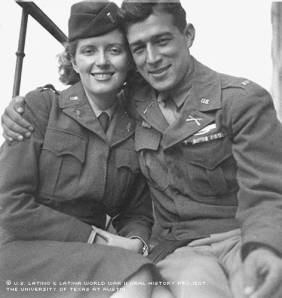 This
‘Heart attack" in question was Ruby Anna White, now Ruby de
la Peña. Ruby was a Canadian who worked as a registered nurse at
the infantry hospital. "Her
smile attracted me primarily," said de la Peña, holding a
photograph from the day they first met. "I saw the guys that she
took care of. They really cared for her a lot, but not as much as me."
This
‘Heart attack" in question was Ruby Anna White, now Ruby de
la Peña. Ruby was a Canadian who worked as a registered nurse at
the infantry hospital. "Her
smile attracted me primarily," said de la Peña, holding a
photograph from the day they first met. "I saw the guys that she
took care of. They really cared for her a lot, but not as much as me."
Two months
after they met, de la Peña asked Ruby to marry him. They spent
the next few months apart, as de la Peña rejoined the 23rd Infantry
unit in Belgium and crossed the Rhine to Leipzig, Germany. He was in Czechoslovakia
when the war ended and was granted leave to go see Ruby in Verdun, France,
where she was working in the 101st General Hospital.
On June 25, 1945,
De la Peña and Ruby were married, twice. They were wed by the mayor
of Verdun in a civil ceremony that morning, and by the Catholic chaplain
in the Cathedral of Verdun in the afternoon.
"While
we were in the church getting married, she reached for my hand because
hers was shaking and she said, 'You're an old combat soldier, you'll give
me strength,' but my hand was shaking more than hers," de la Peña
said.
When the newlyweds returned from Europe, de la Peña, who’d entered the Army in 1942, met Ruby’s family in Michigan and took a job at a local bank. He never liked his job there and felt he belonged somewhere else. "One day I said to Ruby, 'For two cents, I'd go back into the Army,' " he recalled. "And she handed me two cents."
De la Peña re-enlisted in the Army in December of 1948, and stayed on active military duty until his retirement on April 1, 1967. During those 19 years, he fought in two other wars, Korea and Vietnam, and left the Army at the rank of Lieutenant Colonel.
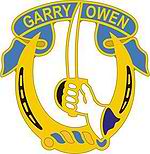 Mike
served during the Korean conflict with the 1st Cavalry, 7th Regiment.
This unit was unfortunately part of some of the bloodiest battles in the
Korean conflict. These included the skirmishes between the enemy and the
Allied Forces that took part at different locations.
Mike
served during the Korean conflict with the 1st Cavalry, 7th Regiment.
This unit was unfortunately part of some of the bloodiest battles in the
Korean conflict. These included the skirmishes between the enemy and the
Allied Forces that took part at different locations.
The battles
were conducted at Poksong-Dong, Hwanggan, Kwanni, and also covered the
Naktong River Defense, which is commonly known as the Battle of Pusan
Perimeter.
Their services
were indispensable as the first cavalry division attacked the north and
the Seventh Cavalry landed right in the front. Within a short time frame
of 24 hours the 1st Cavalry 7th Regiment smashed 106 miles into the enemy
territory. The colors of the cavalry were further honored with the addition
of three more Presidential Unit Citations.
Mike has an insight to the first ideas about the Green Beret. He said, “ They wanted to be pale blue with a gold band but better minds prevailed with the green color and the black band that is in use today.”
By the time John F. Kennedy was inaugurated as president in January 1961, the three Special Forces groups -- the 10th, the 7th (re-designated from the 77th on June 6, 1960) and the 1st -- had firmly entrenched themselves as the Army's elite. But even more importantly, Special Forces grew at a speed unthinkable to Aaron Bank and other SF proponents of the early 1950s.
In 1961, Kennedy visited Fort Bragg. He inspected the 82nd Airborne Division and other conventional troops of the XVIII Airborne Corps and liked what he saw. But what he liked even more were the Special Forces. As a student of military affairs, Kennedy had developed an interest in counterinsurgency -- the art and method of defeating guerrilla movements. As he gazed at the ranks of Special Forces troops, he realized he had the ideal vehicle for carrying out such missions.
Kennedy's interest in the Special Forces also led finally to the formal adoption on Sept. 21, 1961, of the Green Beret as the official headgear of all Special Forces troops. Until then, the beret had faced an uphill fight in its struggle to achieve official Army recognition. Special Forces Maj. Herb Brucker, a veteran of OSS, had originally designed the Green Beret in 1953. Later that year, 1st Lt. Roger Pezelle adopted it as the unofficial headgear for his A team, Operational Detachment FA 32. They wore it whenever they went to the field for prolonged exercises. Soon, it spread throughout all of Special Forces. But the Army had refused to authorize its official use.
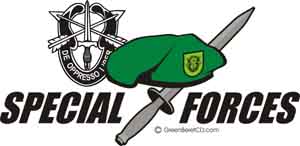 With
Kennedy firmly behind them, new Special Forces groups sprang up with dizzying
rapidity. On Sept. 21, 1961, the 5th Group was activated, followed in
1963 by the 8th on April 1, the 6th on May 1, and the 3rd on Dec. 5, 1963.
With
Kennedy firmly behind them, new Special Forces groups sprang up with dizzying
rapidity. On Sept. 21, 1961, the 5th Group was activated, followed in
1963 by the 8th on April 1, the 6th on May 1, and the 3rd on Dec. 5, 1963.
By July 1954,
the U.S. Military Assistance Advisory Group, Vietnam, numbered 342. In
October of that year, President Dwight D. Eisenhower promised direct aid
to the government of South Vietnam, headed at that time by Premier Ngo
Dinh Diem. From 1954 to 1956 Viet Minh cadres were forming action committees
to spread propaganda and to organize the South Vietnamese to oppose their
own government. In July 1955, the People's Republic of China announced
an agreement to aid the Viet Minh, and the Soviet Union announced aid
to Hanoi. In August, Diem's government rejected for the third time Hanoi's
demands for general elections throughout the two Vietnams, and in October
Premier Diem, who became the first president, proclaimed South Vietnam
a republic.
President John F. Kennedy announced on 21 September 1961 a program to provide additional military and economic aid to Vietnam.
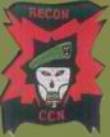 Mike
de la Pena was the Lt Col of 5th group. The group was deployed to Vietnam
in 1964. Special Forces operations in the III CTZ in 1965 were the responsibility
of Detachment C-3 at Bien Hoa that was commanded by Lieutenant Colonel
(LTC) Miguel de la Peña. In January, Captain (CPT) Joseph S. Stringham
took command of Detachment A-301 at the Ben Cat CIDG camp. Several major
VC attacks in and around Ben Cat from December 1964 through May 1965 led
to the formation of the MIKE Force. This was a reaction force of well-trained
troops to quickly reinforce a camp under heavy attack. Forming, training,
and leading this new force became Detachment A-302’s mission.
Mike
de la Pena was the Lt Col of 5th group. The group was deployed to Vietnam
in 1964. Special Forces operations in the III CTZ in 1965 were the responsibility
of Detachment C-3 at Bien Hoa that was commanded by Lieutenant Colonel
(LTC) Miguel de la Peña. In January, Captain (CPT) Joseph S. Stringham
took command of Detachment A-301 at the Ben Cat CIDG camp. Several major
VC attacks in and around Ben Cat from December 1964 through May 1965 led
to the formation of the MIKE Force. This was a reaction force of well-trained
troops to quickly reinforce a camp under heavy attack. Forming, training,
and leading this new force became Detachment A-302’s mission.
“The unit was named the MIKE Force. This came from LTC Miguel “Mike” de la Peña. Mike was his code name,” said Stringham. The MIKE Force was composed of three 150-man companies. With 348 Company as the nucleus, A-302 recruited Nungs to fill the ranks of the other companies. Nungs were also hired to form the reconnaissance platoon. There were no Vietnamese CIDG or Special Forces in the first MIKE Force.
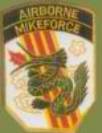 Ben
Cat was constructed in September 1964 adjacent to the Iron Triangle to
the south and War Zones C and D to the north. At Ben Cat, A-301 had three
150-man CIDG companies and a South Vietnamese Army Special Forces (LLDB)
detachment. Two of the CIDG companies, 348 and 349, were made up of Chinese
Nungs and the third, 346, was filled with ethnic South Vietnamese from
the Saigon area.
Ben
Cat was constructed in September 1964 adjacent to the Iron Triangle to
the south and War Zones C and D to the north. At Ben Cat, A-301 had three
150-man CIDG companies and a South Vietnamese Army Special Forces (LLDB)
detachment. Two of the CIDG companies, 348 and 349, were made up of Chinese
Nungs and the third, 346, was filled with ethnic South Vietnamese from
the Saigon area.
“The Nungs
were Chinese that had been run out of China [into Vietnam in the 3rd century
BC],” recalled CPT Joseph Stringham. “There was no doubt where
their loyalties lay. They were 100% anti-Communist.” The tough, experienced
Nungs became the nucleus of the MIKE Force after proving themselves in
two fierce battles near Ben Cat.
The basic structure
of the Special Forces Group (Airborne) consisted of a headquarters and
headquarters company, three or more line Special Forces companies, a signal
company, and an aviation detachment. The headquarters and headquarters
company 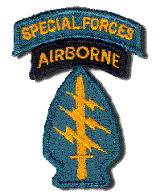 encompassed
all the usual staff sections for command and control, as well as the major
portion of the group medical capability and the parachute rigging and
air delivery elements. The line Special Forces company was commanded by
a lieutenant colonel and was normally composed of an administrative detachment
and an operations detachment C, which commanded three operations detachment
B's, each of which commanded four operations detachment A's. The A detachment
is the basic twelve- man team.
encompassed
all the usual staff sections for command and control, as well as the major
portion of the group medical capability and the parachute rigging and
air delivery elements. The line Special Forces company was commanded by
a lieutenant colonel and was normally composed of an administrative detachment
and an operations detachment C, which commanded three operations detachment
B's, each of which commanded four operations detachment A's. The A detachment
is the basic twelve- man team.
By the time the 5th SF Group left Vietnam, its troops bravery was awarded 16 of the 17 Medals of Honor awarded to Special Forces soldiers in Vietnam. Also, one Distinguished Service Medal, 60 Distinguished Service Crosses, 814 Silver Stars, 13,234 Bronze Stars, 235 Legions of Merit, 46 Distinguished Flying Crosses, 232 Soldier's Medals, 4,891 Air Medals, 6,908 Army Commendation Medals and 2,658 Purple Hearts. SF soldiers earned their reputations in places like Dong Xoai and Plei Mei, where the Viet Cong and North Vietnamese threw everything they had at them but found out that wasn't enough.
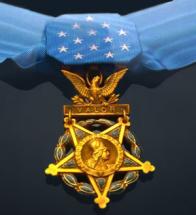 They
earned their Medals of Honor in places like Nam Dong, where Capt. Roger
H.C. Donlon was awarded the first MOH of the war for his actions on July
6, 1964, when he led Nam Dong's successful defense against a Viet Cong
attack, despite sustaining a mortar wound to the stomach.
They
earned their Medals of Honor in places like Nam Dong, where Capt. Roger
H.C. Donlon was awarded the first MOH of the war for his actions on July
6, 1964, when he led Nam Dong's successful defense against a Viet Cong
attack, despite sustaining a mortar wound to the stomach.
"Pain,
the sensation of pain, can be masked by other emotions in a situation
like that," Donlon recalled. "I was fighting mad right from
the start; I also felt fear from the start ... fear anybody would feel.
It got to the point where we were throwing the enemy's grenades back at
them. Just picking them up and throwing those grenades back before they
could blow."
Back home in America, a confused public searching for heroes in a strange and unfamiliar war quickly latched onto the Special Forces. John Wayne made a movie about them, Barry Sadler had a number-one hit song about them, and the green beret took its place alongside the coonskin cap and cowboy hat as one of America's mythic pieces of apparel.
Mike de la Pena retired from the Army on April 1, 1967 at the rank of Lieutenant Colonel and was employed by the Michigan Automotive Command. Miguel and Ruby Anne also had special romantic time together. For their 50th wedding anniversary, the de la Peñas took a trip to Europe and visited the landmarks of their past. The hospital in Somerset and the mayor's office in Verdun were still there, half a century after the end of WWII, like Ruby Anna and Mike de la Peña themselves.
"There's a song in Spanish that has to do with our marriage," Mike said. "'I love you more than yesterday but less than tomorrow.'"
Sources: Miguel de la Pena, Veritas, Joe Stringham, The Drop, Bob Hand, U of Texas Oral History